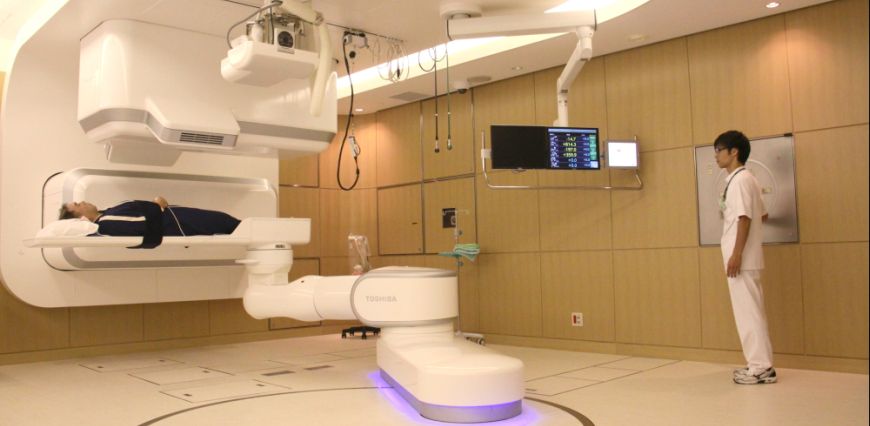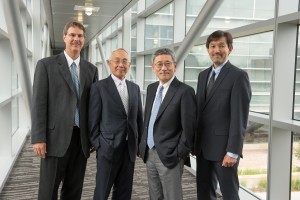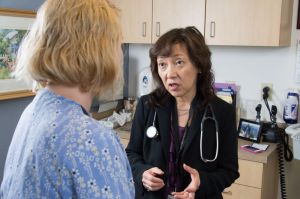
In Japan this week, Colorado Gov. John Hickenlooper will tour a cutting-edge cancer radiation facility and will learn more about a similar facility that Colorado State University and its partners hope to build near Denver to help patients with deadly, therapy-resistant cancers.
Colorado cancer researchers and medical doctors last year announced a $200,000 feasibility study for what would be the nation’s first carbon-ion radiotherapy research and treatment facility in Aurora. The state’s cancer treatment community touts the proposed facility as a center to provide patients with radiation therapy that is effective against the deadliest cancers and now is available only in Japan, China and Europe.

The center is expected to cost about $180 million; backers say it would generate an estimated $75 million a year for Colorado’s economy.
The project’s collaborators include radiation experts at CSU and oncologists at the University of Colorado. They signed a memorandum of understanding to pursue the project with University of Colorado Health’s Poudre Valley Hospital in Fort Collins and with carbon-ion radiotherapy pioneers at the National Institute of Radiological Sciences (NIRS) in Japan, the first nation in the world to build a facility of this kind.
Hickenlooper will visit NIRS on Oct. 10 with CSU President Tony Frank; Jac Nickoloff, head of the Department of Environmental and Radiological Health Sciences; and other university officials. Joining them will be Don Elliman, chancellor of CU’s Anschutz Medical Campus, and Dr. Chad Rusthoven, a radiation oncologist in the CU School of Medicine.
Hickenlooper will hear a presentation from CSU, CU and NIRS at the carbon-ion radiation facility. He also will meet with officials from Yamagata University, which is building a facility that could be a model for Colorado.
“We’d love to have the governor’s support for this project,” Nickoloff said. “In addition to the economic boon it would provide to the state, this would be a major collaboration with Japan that involves education, clinical care, computing, physics, biology and renewable energy.”

Rusthoven, representing Colorado’s radiation oncology community, said carbon-ion cancer treatment holds tremendous potential for U.S. patients.
“Carbon-ion radiotherapy represents an exciting technology with a theoretic potential for reducing radiation doses to normal tissues and escalating the biologic effective dose of radiation delivered to the tumor,” Rusthoven said.
After leaving Japan, Hickenlooper and his delegation will visit three other countries: China, Turkey and Israel. A CSU delegation will accompany the governor to China (see related story at right).
“This mission will engage business, political and thought leaders to strengthen Colorado’s relationships and support our efforts in developing unique economic opportunities to create and retain jobs,” Hickenlooper said. “Creating deeper ties between these countries and Colorado allows us to also promote our state’s innovative economy and business environment to potential foreign investors.”
The Colorado Office of Economic Development and International Trade organized the trip. It involves 52 Colorado business and academic leaders focused on innovation and global business development.
Carbon-ion radiotherapy
• A type of radiation treatment for deadly tumors resistant to other therapies, including tumors of the head and neck.
• No treatment centers now in the United States.
• Effective because carbon ions are larger than common forms of radiotherapy, including photons, electrons and protons.
• The large particles are more lethal to DNA in tumor cells.
• Carbon ions may be more precisely targeted to tumors, reducing damage to surrounding tissue and likely decreasing side effects.
CSU visits China too
A delegation of CSU representatives led by Provost and Executive Vice President Rick Miranda will join Colorado Gov. John Hickenlooper in China on Oct. 12 following his visit to Japan. They will meet with the founder and chairman of Cathay Industrial Biotech and other company representatives in Shanghai to discuss Cathay Biotech’s work in Colorado and with CSU.
CSU Vice Provost for International Affairs Jim Cooney explained that CSU is coordinating the visits of several groups to China in mid-October, and the visit to Shanghai with Hickenlooper is one of the top priorities.
Another top priority for the China trip is an international “Symposium on Agricultural Extension and Technology Transfer,” Oct. 16-17 in Anhui Province. Vice President for Engagement Louis Swanson has been the chief CSU organizer for the symposium. Thirty-nine Chinese universities will send representatives to discuss the topic with several CSU faculty members. Senior government officials from three Chinese ministries plus Anhui Province will also be involved in the event, which is expected to be covered widely in the Chinese media.
“It is a path-breaking collaboration on extension and technology transfer between China and the United States, and it will spread CSU’s name widely in China,” Cooney said, adding that Miranda will be the featured CSU speaker at the symposium.
During the visit to China, the CSU delegation will also meet with representatives from seven Chinese universities to develop ongoing partnerships or consider new forms of collaboration. In addition, there will be a CSU Confucius Institute Seminar on urban water at China’s famous Tsinghua University Oct. 21-22.
In addition to Miranda, Cooney and Swanson, other CSU officials on the China trip include Vice President for Research Alan Rudolph, Vice President for University Operations Lynn Johnson, Associate Provost for Instructional Innovation Mike Palmquist, and Associate Provost for China Programs Wei Gao, also a professor in Ecosystem Science and Sustainability.
“With 31 participants, this is by far the largest delegation we have ever sent to China,” Cooney said.